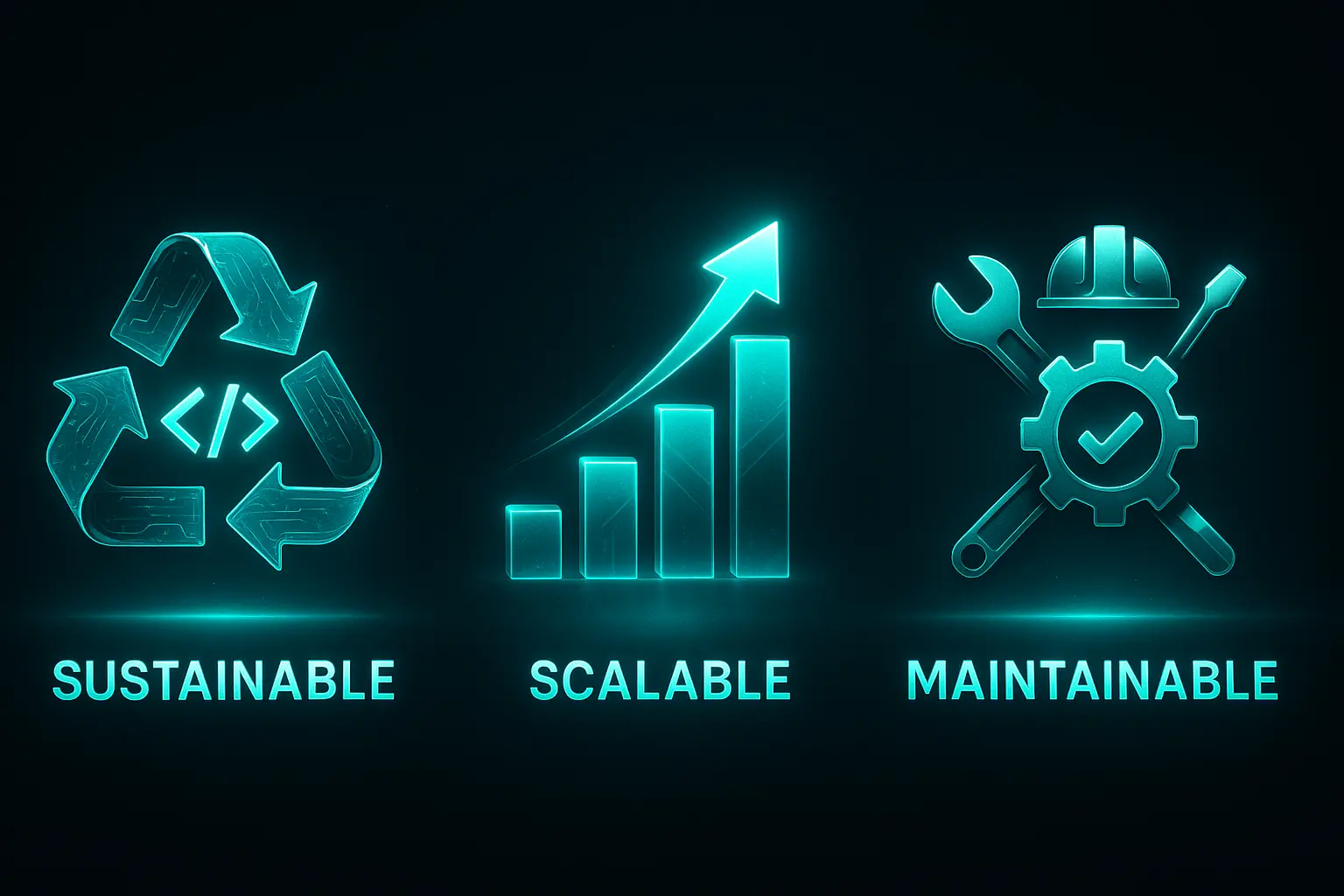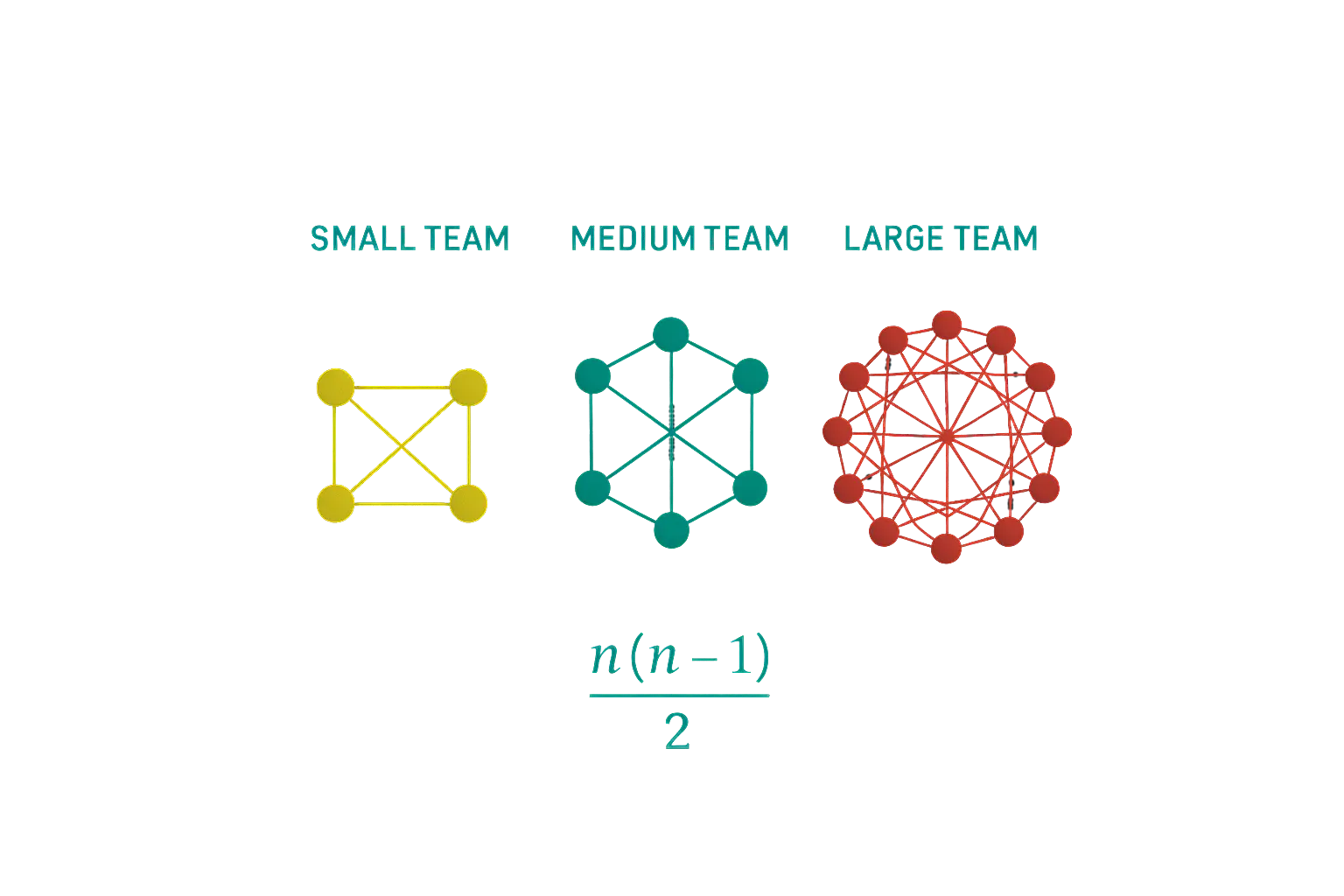Common Software Development Challenges for SMEs
Small to Medium Enterprises frequently start software projects with a single developer or a small team, who may have mid to senior-level experience. This initial setup allows for rapid prototyping and quick delivery of the client's basic needs. However, as the project evolves, several common issues arise that can hinder long-term success.
The Typical Start: Small Teams and Budget Constraints
Single, or a small team of developers often have mid- to senior-level experience and may have worked independently on smaller projects. Budget limitations are a primary reason why this approach is chosen, enabling businesses to prototype and launch a minimum viable product (MVP) quickly and at a lower cost. However, senior positions like software architects and project managers are rarely involved at this stage, owing to budget, time, and availability limitations.
Rapid Growth Brings New Complexities
As the business needs evolve, so too does the software. What starts as a defined project with a clear endpoint quickly expands in scope. Clients want more features, more integrations, and more users leveraging the system. This expansion is typically managed with milestones or deliverables, fostering the illusion that the software is “complete” at each stage.

Hidden Costs and Unforeseen Limitations
What's often overlooked are the ongoing costs and limitations of maintaining and scaling the software. These crucial aspects are rarely considered during initial budgeting and planning. Frequently, the original developer may not have full visibility into future needs or technical limitations or may not clearly communicate them to management. As a result, clients can be caught off guard by the ongoing expenses and technical debt that accumulates as their software usage grows.
Scope Creep and Developer Burnout
With the software's increasing complexity, the key developer faces pressure to keep up with expanding deliverables and scope creep. Lacking backup from senior software architects or cloud experts, the developer is expected to solve problems outside their prior experience. This constant demand is a major cause of developer burnout, jeopardizing both the team and the project.
The Junior-to-Mid-Level Hiring Trap
To address rising workloads, businesses often hire junior to mid-level developers. But instead of easing the burden, this can introduce additional challenges: communication breakdowns, management overhead, and increased operational complexities. The lead developer, already stretched thin, must now also onboard and manage new hires while still meeting client expectations.

The Neglected Operations Burden
Over time, the growing demands of day-to-day operations, maintenance, outages, updates, and user support can overwhelm the development team. These tasks, once managed by the key developer, begin to fall by the wayside as priorities shift to new feature delivery. Neglecting this operational "plumbing" can leave the software in a fragile state, exposing the business to risk.
The Critical Role of Senior Operations and Architecture
Key roles such as SysOps, DevOps, SecOps, and Cloud Solutions Architects are essential for mature, reliable software. Unfortunately, these are highly specialized, are rarely available as freelancers or part-timers, and are out of reach for many SME budgets. Yet, they are essential for scaling, security, and resilience, regardless of company size or project workload.
Bridging the Gap: A Path Forward for SMEs
This pattern is common and costly for growing companies. Recognizing these challenges is the first step. By proactively planning for operational roles and scaling expertise, SMEs can minimize technical debt, reduce burnout, and ensure their software remains robust and scalable. Our team specializes in helping SMEs bridge exactly these gaps, bringing the right expertise at the right stage of growth.

Summary of Key Takeaways
- Software projects in SMEs often start with small teams due to budget constraints.
- Project complexity and scope grow rapidly, revealing hidden costs and limitations.
- Key developers can face burnout, particularly as senior roles are often missing.
- Hiring more junior developers can add management and communication overhead.
- Operations and maintenance often become neglected as new features take priority.
- Critical roles like DevOps and Cloud Architects are essential but hard to staff.
- Properly planning for these roles ensures long-term software success.
